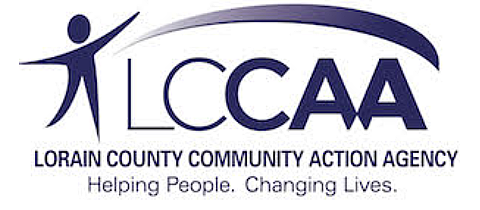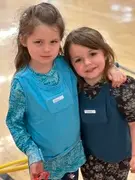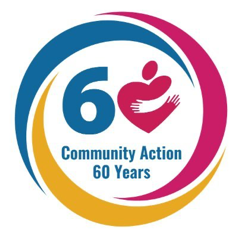LCCAA Head Start teachers intentionally interact with every one of their students and they have the data to prove it.
This past school year, teachers at three LCCAA sites worked with the Ohio Child Care Resource Center to implement Language Environment Analysis or “LENA.” LENA measures how often students speak with teachers and each other using a “talk pedometer” the children wore in special vests.
“Conversational interactions are so important at any age of development,” said LCCAA Head Start’s Education and Disabilities Specialist Jennifer Bartlebaugh. “These interactions foster trust and emotional security while enhancing and building children’s vocabulary. They also support a child’s engagement, learning and other positive outcomes that persist through adulthood.”
Head Start teachers work to create a language-rich environment but were eager to see the data that proved it, said Pam Caruso, site administrator for Firelands Head Start. Students wore the vests one day each week for five weeks and then experts from the Child Care Resource Center went over the data.
“My Wellington teachers are great teachers, but were curious where their language would rate,” said Site Coordinator Kara Goodwin. “They have several with speech delays and several extremely quiet children. Each week they set goals to target specific children and enhance different times of day.”
Data was included for each child and were measured based on time of day. This allowed the teachers to see when some students were engaging more or less depending on the type of activity occurring. For example, if one child had more than 40 social interactions while another was closer to 25, teachers would work to even up those experiences, Caruso said.
“It was eye opening,” said Firelands Head Teacher Shannon Smith. “Seeing this data allowed me to pinpoint times where I could be more intentional with specific children.”
“I liked that it showed child to child interactions, not only teacher to child,” added Firelands Assistant Teacher Rebecca Volk. “We try our best to reach each child and the data confirmed that.”
Caruso agreed.
“What I noticed was the teachers using the data to improve their daily practice to ensure that they were equitable in their conversations not only with each child, but during various parts of the day,” she said. “This absolutely made a difference as we watched some of our quieter children begin to use more language and get involved in more conversations.”
The data was extremely helpful in working with children who had challenging behaviors. Instinctively, most early childhood professionals want to give those children more attention, but Caruso said that can backfire.
“When you have challenging behaviors in the classroom, it is easy to worry that you’re not giving everything you can to a child in need,” she said. “Oddly enough, the data told us that we were being over-equitable, which made us look at the possibility of using too many words when a child was already over stimulated.”
Bartlebaugh said LCCAA Head Start would love to give more teachers a chance to use the LENA system. She also said it closely aligned with the Classroom Assessment Scoring System (CLASS) used by the Office of Head Start to evaluate how teachers operate their classrooms.
“I felt it made teachers aware of their students but also to plan more intentionally with children and the importance of conversations and interactions,” she said.
Goodwin agreed.
“It was a great project to be a part of,” she said. “It didn’t interfere with any classroom activities. I’m sorry it was only five weeks.”
Like all data, LENA tells a story, Caruso said, adding that valuable information was also sent home for parents.
“We call ourselves a school family,” she said. “What we do during the school day is designed to make every child feel seen, heard and important. The data was a way to show that in a tangible way.”



